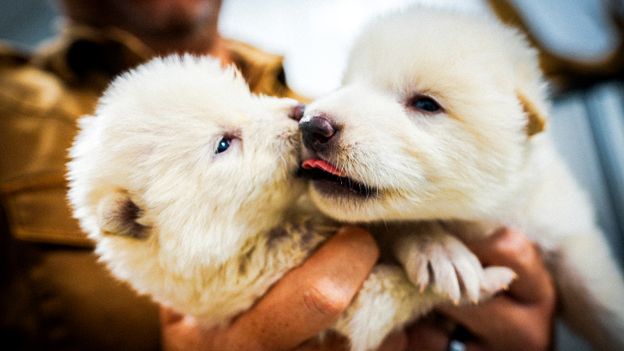Dire Wolf De-Extinction Sparks Debate Among Scientists
The de-extinction of the dire wolf has raised important questions about the potential impact of this technology on the environment and the ethics of bringing back extinct species. As scientists and conservationists weigh the pros and cons of de-extinction, one thing is clear: the fate of the dire wolf and other extinct species will depend on the ability of companies like Colossal Biosciences to balance technological advancements with responsible and sustainable conservation practices.

Colossal Biosciences, a biotechnology company, has successfully created three "dire wolf" pups with dire wolf-like traits, but experts argue that this is not the same as truly resurrecting the species, and that the company's approach to de-extinction may divert resources away from conservation efforts.
The company's methods involve genetic modification of modern species to give them characteristics of extinct species, which some scientists argue is not the same as true de-extinction. The ethics of de-extinction are also being questioned, particularly in regards to the use of Asian elephants as surrogates for woolly mammoths. Some experts argue that elephants are intelligent, social, and sentient beings that should not be experimented on or used for entertainment purposes.
The cost of de-extinction is also a concern, with some scientists estimating that it could be in the millions of dollars. However, some experts argue that the resources spent on de-extinction could be better spent on conservation efforts that address the root causes of extinction. Colossal's CEO has argued that de-extinction is just one piece of a complex puzzle that includes habitat protection and other conservation efforts.
As the debate surrounding de-extinction continues, Colossal Biosciences remains committed to its goal of using technology to bring back extinct species and preserve endangered ones. The company's work has sparked a wider conversation about the ethics of de-extinction and the potential consequences of playing with genetic material, and experts will be closely watching the company's next moves.